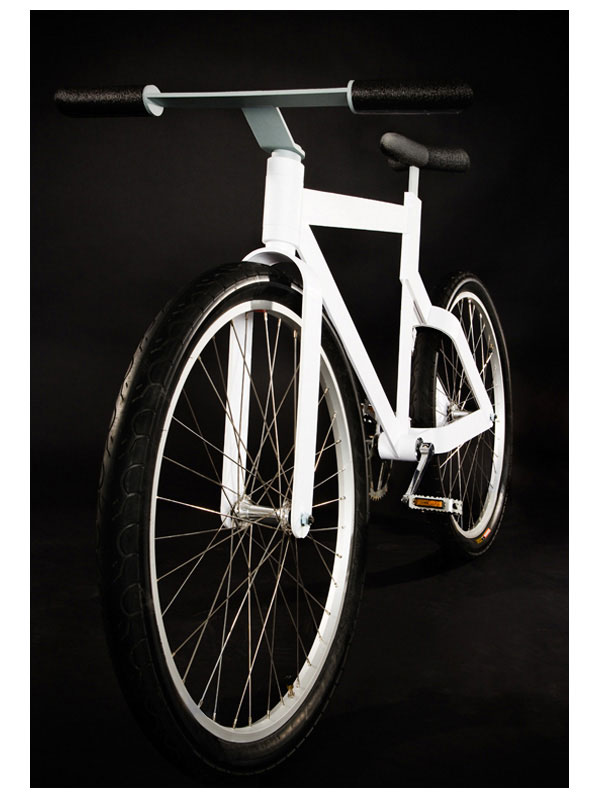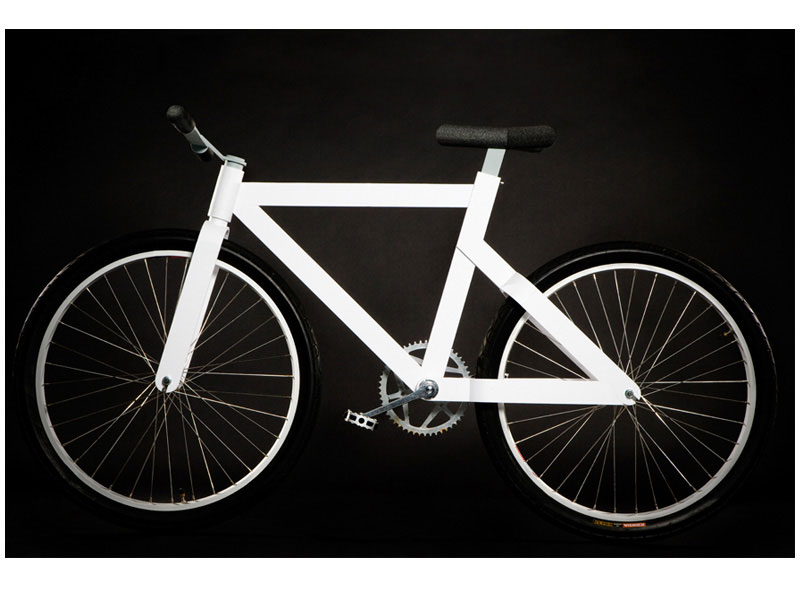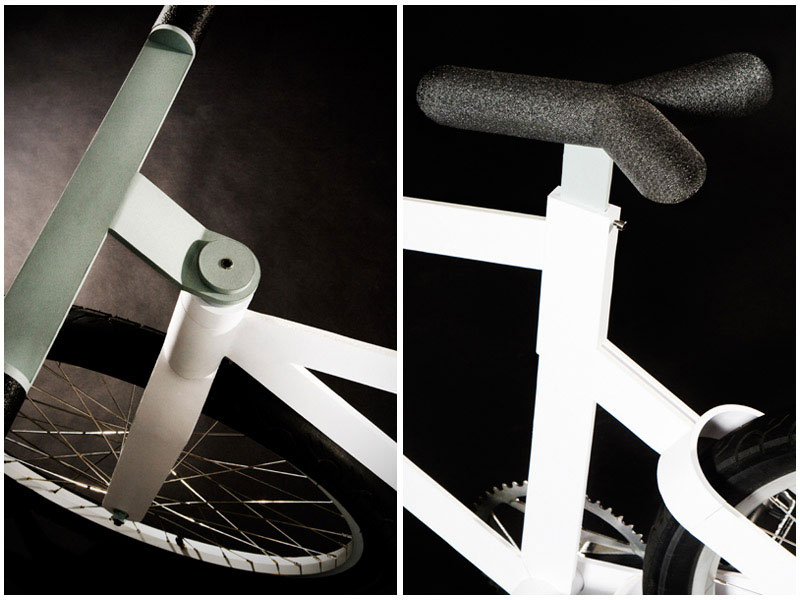
thick & thin bike by ahmet onur from usa
designer's own words:
DESIGN BRIEF
Looking at contemporary bicycle design, the first thing that draws my attention is the fascinating and sometimes overwhelming complexity of these wonderful machines. While I can greatly appreciate why and how they have evolved into the engineering marvels that they are today, I also feel that there should be an alternative, more basic approach to bicycle design and construction as well. Through this simple observation my own design brief had formed itself.
Design a bicycle with:
A) Simple geometry
B) Standard material and dimensions
C) Ease of manufacture
D) Appealing aesthetic
E) Reduced cost
A) SIMPLE GEOMETRY
The frame is made up of two (one bigger, one smaller) triangles with the same angles (75, 62, 43) in each. This ensures that the horizontal (top tube and chainstay), vertical (head tube/fork and seat tube) and diagonal (down tube and seat stay) frame components are parallel within their groups.
B) STANDARD MATERIAL AND DIMENSIONS
The selected material throughout is 6061 aluminum alloy. This was chosen for it's lightness (bike frame with fork weighs no more than 10 lbs.), stiffness, easy welding capability and cost. Except for the 2" diameter x 1/4" thick head tube and bottom bracket shell and the 1/4" thick x 1.5" wide seatpost and handlebar, the frame is composed entirely of 1/4" thick x 2" wide sections or multiple layers of these sections.
C) EASE OF MANUFACTURE
I especially wanted to design a bicycle that was simple enough to be manufactured in a metal shop, instead of a bike builder. All frame components are simple enough that they could be cut without a laser. The fork and seat stay are exactly the same. Both are standard section (1/4" x 2") bent into a 4" dia. half circle with side arms and slots for the wheels. The chainstay is the same geometry as well except for the shorter side arms and a punched in section (which creates the only antisymmetry on the bike) of the 4" dia. half circle for accomodating a chainring. The handlebar (1.5" wide) and stem (2" wide) are integrated to form one flat "T" piece that gets bent at two sections. All welds are straight except for the perimeter of the cylindrical drive train shell.
D) APPEALING AESTHETIC
The dimensions of the selected material allow for two very different perceptions of the same bike. Looked at from the front, back and top the thinness and seeming fragility of the frame stick out. However, from the sides a thicker and seemingly more sturdy frame is realized. This duality, to a person observing from a stationary point, creates the illusion of a bicycle in transformation while in motion. Seat and handlebar grips were designed to complement the overall aesthetic of the bicycle frame.
E) REDUCED COST
While standard materials and dimensions, manufacturing ease and reduced assembly time are not the only requirements for a cheaper bicycle, they do assist in reducing cost overall.
ADDITIONAL
This bicycle is an urban hybrid with a midsize frame. The wheels are 26" dia. with 2" wide tires. The seat shell and handlebar grips are made of waterproof foam.
front view
 side view
side view
 details
details